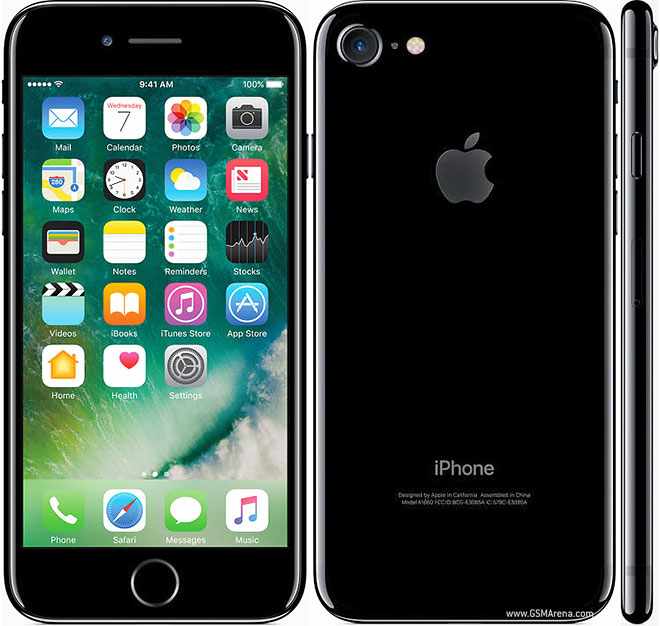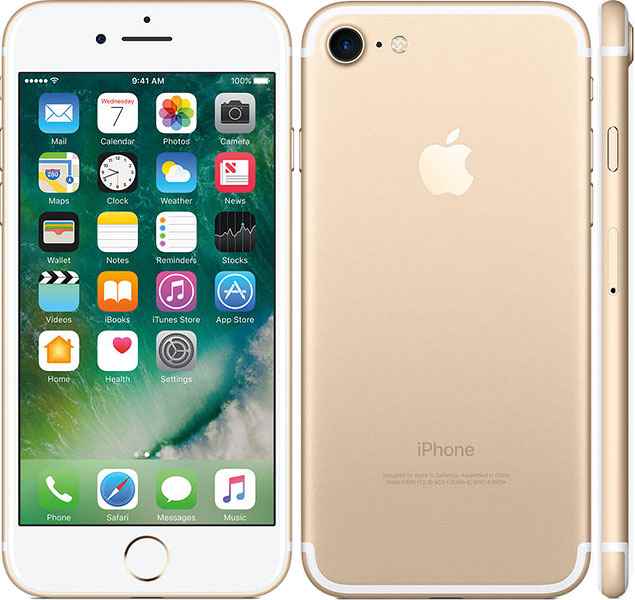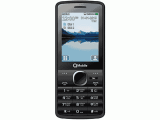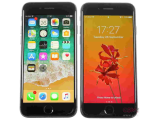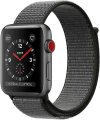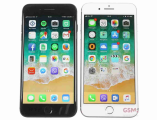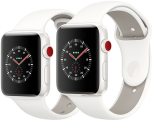
Apple iPhone 7 Plus 256 GB Prices
Important Note.
- All prices are in Pakistani Rupee (PKR)
- Prices may vary at stores and our effort will be to provide you with the updated prices.
- The latest price of Apple iPhone 7 Plus 256 GB was obtained on 17 مئی, 2019. The prices at the original stores had been updated on the respective mentioned dates.
- Find out WhatMobile price has dropped in Pakistan by selecting Notify Price Drop button
- Find out WhatMobile has better specifications by clicking Add To Compare Button find out what Mobile has better reviews by visiting our reviews section
- Find out WhatMobile is cheaper on which retailer by clicking Compare prices from retailers button
Search Terms
- Apple iPhone 7 Plus 256 GB
Specifications
| GENERAL | |
| 2G Network | GSM 850 / 900 / 1800 / 1900 - A1661, A1784 CDMA 800 / 1900 / 2100 - A1661 |
|---|---|
| 3G Network | HSDPA 850 / 900 / 1700(AWS) / 1900 / 2100 - A1661, A1784 CDMA2000 1xEV-DO & TD-SCDMA - A1661 |
| 4G Network | LTE band 1(2100), 2(1900), 3(1800), 4(1700/2100), 5(850), 7(2600), 8(900), 12(700), 13(700), 17(700), 18(800), 19(800), 20(800), 25(1900), 26(850), 27(800), 28(700), 29(700), 30(2300), 38(2600), 39(1900), 40(2300), 41(2500) - A1661, A1784 |
| Sim | Nano-SIM - Apple Pay (Visa, MasterCard, AMEX certified) - Waterproof |
| Announced | 14/09/2016 |
| Status | Available. Released 2016, September |
| BODY | |
| Dimensions | 158.2 x 77.9 x 7.3 mm (6.23 x 3.07 x 0.29 in) |
| Weight | 188 g (6.63 oz) |
| DISPLAY | |
| Display Size | 5.5 inches, 83.4 cm2 (~67.7% screen-to-body ratio) |
| Resolution | 1080 x 1920 pixels, 16:9 ratio (~401 ppi density) |
| MultiTouch | Yes |
| Protection | Ion-strengthened glass, oleophobic coating - Wide color gamut display - 3D Touch display & home button |
| SOUND | |
| AlertTypes | Vibration, proprietary ringtones |
| LoudSpeaker | Yes, with stereo speakers |
| 3.5mm jack | No - Active noise cancellation with dedicated mic - Lightning to 3.5 mm headphone jack adapter incl. |
| MEMORY | |
| CardSlot | No |
| Internal | 256 GB, 3 GB RAM |
| DATA | |
| GPRS | Yes |
| EDGE | Yes |
| Speed | HSPA 42.2/5.76 Mbps, LTE-A (3CA) Cat9 450/50 Mbps, EV-DO Rev.A 3.1 Mbps |
| WLAN | Wi-Fi 802.11 a/b/g/n/ac, dual-band, hotspot |
| Blue Tooth | 4.2, A2DP, LE |
| NFC | Yes (Apple Pay only) |
| USB | 2.0, proprietary reversible connector |
| CAMERA | |
| Camera Primary | Dual: 12 MP (f/1.8, 28mm, 1/3", OIS) + 12 MP (f/2.8, 56mm, 1/3.6"), phase detection autofocus, 2x optical zoom, quad-LED dual-tone flash |
| Camera Features | Geo-tagging, simultaneous 4K video and 8MP image recording, touch focus, face/smile detection, HDR (photo/panorama) |
| CameraVideo | 2160p@30fps, 1080p@30/60/120fps, 720p@240fps |
| CameraSecondary | 7 MP (f/2.2, 32mm), 1080p@30fps, 720p@240fps, face detection, HDR |
| FEATURES | |
| Processor Cores | Quad-Core |
| OS | iOS 10.0.1, upgradable to iOS 11.2 |
| CPU | Quad-core 2.34 GHz (2x Hurricane + 2x Zephyr) |
| Sensors | Fingerprint (front-mounted), accelerometer, gyro, proximity, compass, barometer |
| Messaging | iMessage, SMS (threaded view), MMS, Email, Push Email |
| Browser | HTML5 (Safari) |
| Radio | No |
| GPS | Yes, with A-GPS, GLONASS, GALILEO, QZSS |
| Java | No |
| Colors | Jet Black, Black, Silver, Gold, Rose Gold, Red |
| Others | - Siri natural language commands and dictation - iCloud cloud service - MP3/WAV/AAX+/AIFF/Apple Lossless player - MP4/H.264 player - Audio/video/photo editor - Document editor |
| BATTERY | |
| Battery | Non-removable Li-Ion 2900 mAh battery (11.1 Wh) |
| StandBy | Up to 384 h (3G) |
| TalkTime | Up to 21 h (3G) |
| MISC | |
| SARUS | 1.19 W/kg (head) 1.19 W/kg (body) |
| SAREU | 1.24 W/kg (head) 1.00 W/kg (body) |
Reviews

We've already delivered our verdict on the standard iPhone 7, but for those who crave a big-screen experience, the 7 Plus is likely to be of more interest. We'll be covering the key differences between the two siblings in this review, but won't be going into as much detail on the elements which are common across both phones - you can refer to our iPhone 7 review for those points.
iPhone 7 Plus Review: Design & Display
The 7 Plus shares an almost identical design to the smaller model, with the only significant difference - aside from the dimensions - being the fact that it has a dual camera setup on the back, which we'll cover later in this review. In every other regard this is simply just a bigger iPhone 7, so we advise you to refer to that review for more information.
It goes without saying that the iPhone 7 Plus boasts a larger screen than the standard model. Its 5.5-inch backlit LED panel has a resolution of 1080 x 1920 pixels, which is a jump from the 4.7-inch, 750 x 1334 pixel screen on the smaller model. A 1080p display on a phablet isn't all that impressive in 2016, and many smaller Android phones have sharper screens. However, as was the case with the standard iPhone 7, it's impossible to pick out individual pixels so it's not that much of a concern. The panel is brighter and better at replicating colours than the one seen on the iPhone 6S Plus, which should give existing iPhone fans reason to upgrade.
iPhone 7 Plus Review: Hardware Specifications
In terms of technical specifications, the 7 Plus is an exact match to the iPhone 7, aside from RAM - the larger model has 3GB while the smaller version has 2GB. To be honest, it's hard to notice any real difference in day-to-day use, although the additional gigabyte should ensure smoother performance on the 7 Plus in the long run.
The powerful A10 Fusion chipset is something of a beast, and we weren't able to make it stutter or stumble during the review period. It's that good.
iPhone 7 Plus Review: Camera
Aside from the screen, this is one of the key areas where the 7 Plus differs from the normal iPhone 7. It has the same 12 megapixel lens as its smaller stablemate, which boasts an aperture of f/1.8 and OIS, allowing for really effective low-light shooting. However, the 7 Plus is packing a second 12 megapixel, f/2.8 telephoto lens which gives x2 optical zoom and works in conjunction with the other camera to create some impressive depth-of-field effects.
When taking a photo, the phone uses the data from both lens to create a depth map and then applies a nifty "Bokeh" effect to blur out the background and bring the subject into sharper focus. While the effect is artificial to degree, it's convincing - and to achieve it via normal means you'd need an expensive DSLR camera with a wide aperture, so what Apple has achieved here is remarkable. The telephoto lens also allows for incredible macro shots, and once you've taken a few snaps with the 7 Plus, you'll wonder how you ever coped without it.
iPhone 7 Plus Review: Battery Life
There's a 2900 mAh battery inside the 7 Plus, which is a big jump from the 1960 mAh cell seen in the smaller model. Stamina could be something of a concern with the standard iPhone 7, but that's not the case with the Plus model - even by the end of the day, our review unit still had juice in the tank and we were able to push it a lot more in terms of playing games, watching movies and surfing the web.
iPhone 7 Plus Review: Conclusion
If you're not concerned with size, then the iPhone 7 Plus is arguably a much better choice than the standard model. It has a roomier screen, better camera setup, improved stamina and an extra gigabyte of RAM - all of which adds up to a superior phone. However, it's also more expensive and is larger than many other 5.5-inch Android phones thanks to those large bezels around the screen, so it's not an entirely perfect offering by any means.
Thanks to Mobile Fun for supplying the Apple iPhone 7 Plus used in this review.
Write Your Own Review
My Recent Reviews
- Be first to post review for this product.
comments powered by Disqus




